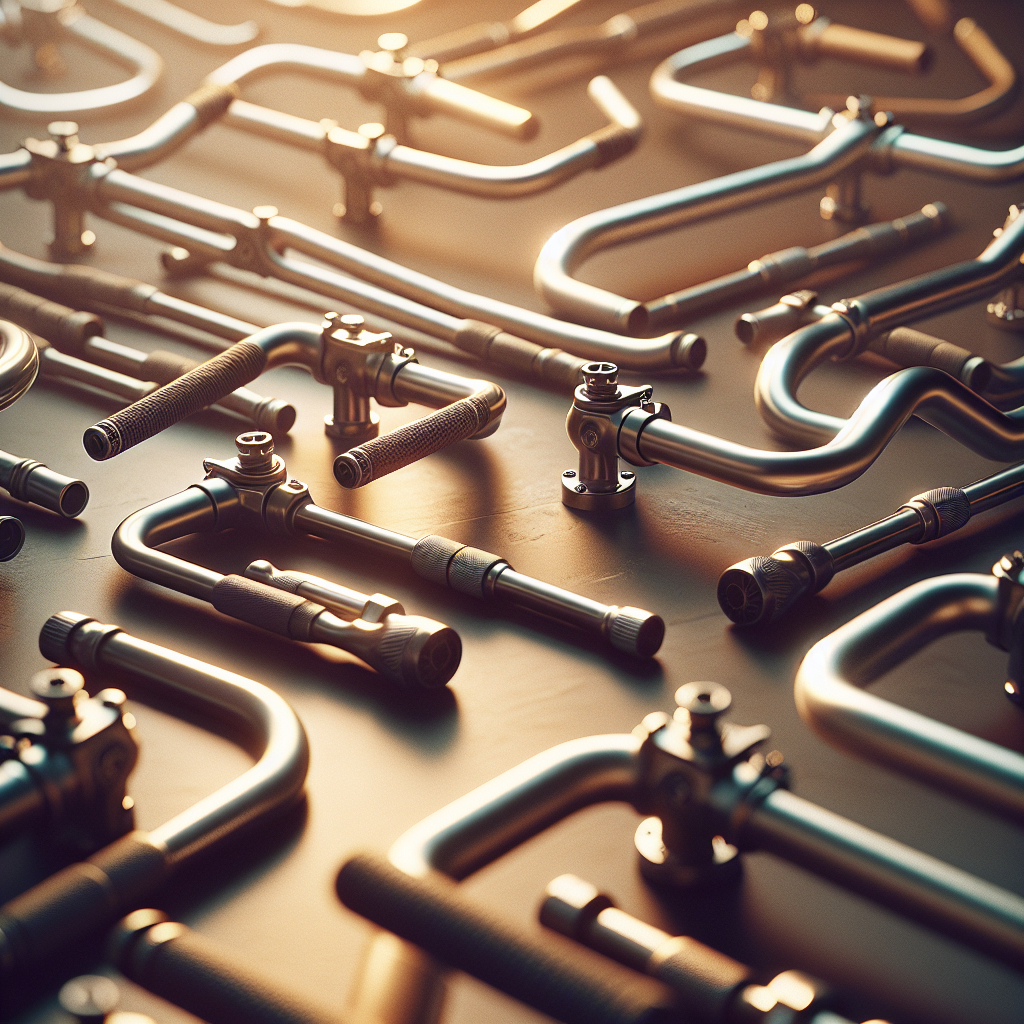
Choosing the right handlebars for your bike is a crucial decision that can significantly impact your riding experience. Whether you’re a casual rider, a commuter, or a competitive cyclist, the handlebars you select will influence your comfort, control, and overall performance. This article will guide you through the various types of handlebars available and help you determine which one is best suited for your needs.
Types of Handlebars
There are several types of handlebars, each designed to cater to different styles of riding and personal preferences. Understanding the characteristics and benefits of each type will help you make an informed decision.
Drop Handlebars
Drop handlebars are commonly found on road bikes and are characterized by their downward-curving shape. They offer multiple hand positions, which can be beneficial for long rides as they allow you to change your grip and reduce fatigue. Drop handlebars are ideal for riders who prioritize speed and aerodynamics.
- Pros: Aerodynamic, multiple hand positions, lightweight.
- Cons: Less comfortable for casual riding, can be challenging for beginners.
Flat Handlebars
Flat handlebars are typically found on mountain bikes and hybrid bikes. They provide a more upright riding position, which can be more comfortable for casual riders and commuters. Flat handlebars offer excellent control and stability, making them suitable for off-road and urban environments.
- Pros: Comfortable, good control, easy to use.
- Cons: Less aerodynamic, limited hand positions.
Riser Handlebars
Riser handlebars are similar to flat handlebars but have a slight upward curve. This design raises the rider’s position, providing better visibility and comfort. Riser handlebars are popular among mountain bikers and those who prefer a more relaxed riding posture.
- Pros: Comfortable, good visibility, excellent control.
- Cons: Less aerodynamic, can be heavier.
Bullhorn Handlebars
Bullhorn handlebars extend forward and then curve upward, resembling the horns of a bull. They are often used on track bikes and fixed-gear bikes. Bullhorn handlebars offer a more aggressive riding position and are favored by riders who seek speed and agility.
- Pros: Aerodynamic, aggressive riding position, lightweight.
- Cons: Limited hand positions, less comfortable for long rides.
Aero Handlebars
Aero handlebars, also known as triathlon or time trial handlebars, are designed for maximum aerodynamic efficiency. They feature extensions that allow the rider to adopt a streamlined position. Aero handlebars are ideal for competitive cyclists and triathletes who need to minimize wind resistance.
- Pros: Highly aerodynamic, optimized for speed.
- Cons: Less comfortable, limited to specific types of riding.
Factors to Consider When Choosing Handlebars
When selecting handlebars, it’s essential to consider several factors to ensure they meet your needs and preferences. Here are some key aspects to keep in mind:
Riding Style
Your riding style plays a significant role in determining the best handlebars for you. For example, if you’re a road cyclist who values speed and efficiency, drop handlebars may be the best choice. On the other hand, if you’re a mountain biker who needs excellent control and stability, flat or riser handlebars might be more suitable.
Comfort
Comfort is crucial, especially for long rides. Handlebars that offer multiple hand positions, such as drop handlebars, can help reduce fatigue and discomfort. Additionally, the width and shape of the handlebars should match your shoulder width and riding posture to prevent strain.
Control and Stability
Different handlebars provide varying levels of control and stability. Flat and riser handlebars are known for their excellent control, making them ideal for off-road and urban riding. In contrast, drop and aero handlebars prioritize aerodynamics and may sacrifice some control for speed.
Material
Handlebars are typically made from aluminum, carbon fiber, or steel. Each material has its advantages and disadvantages:
- Aluminum: Lightweight, affordable, and durable. However, it can be less comfortable due to its stiffness.
- Carbon Fiber: Extremely lightweight and absorbs vibrations well, providing a smoother ride. However, it is more expensive and can be less durable.
- Steel: Very durable and comfortable due to its flexibility. However, it is heavier than aluminum and carbon fiber.
Width and Reach
The width and reach of the handlebars should match your body dimensions and riding style. Wider handlebars offer better control and stability, while narrower handlebars are more aerodynamic. The reach, or the distance from the stem to the handlebars, should allow you to maintain a comfortable and efficient riding posture.
Conclusion
Selecting the perfect handlebars for your bike involves considering your riding style, comfort, control, material, and dimensions. By understanding the different types of handlebars and their respective benefits, you can make an informed decision that enhances your riding experience. Whether you prioritize speed, comfort, or control, the right handlebars can make a significant difference in your overall performance and enjoyment on the bike.

